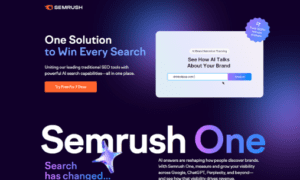No testing strategy is effective without high-quality, secure data behind it. Clean and representative test data enables early bug detection, reliable automation, and faster, more predictable releases. That’s why more and more teams are turning to automated test data provisioning and anonymization as key components of modern software delivery pipelines.
What Is Automated Test Data Provisioning?
Test data provisioning refers to the process of delivering test-ready data into environments like development, QA, staging, or integration testing. Traditionally, this required manual steps—copying production data, masking fields by hand, or relying on IT support to prepare environments. These manual workflows are slow, error-prone, and unscalable.
Automated test data provisioning eliminates those bottlenecks. With automation integrated into the CI/CD pipeline, provisioning becomes a repeatable, traceable, and secure process that can be triggered on demand.
An effective provisioning workflow typically includes:
- Data discovery and classification: Identifying sensitive data across source systems.
- Data transformation: Filtering, subsetting, or generating synthetic datasets.
- Environment delivery: Deploying data into non-production environments with proper security and consistency.
By automating these steps, teams can provision test data on demand—keeping it synchronized, reusable, and compliant across environments.
What is the Importance of Automation?
Data provisioning is often labor-intensive, time-consuming, and difficult to scale. It typically involves manual steps that slow down testing cycles and increase the risk of errors. In addition to operational inefficiencies, there’s a significant security concern: the potential exposure of real user data in non-secure environments.
Automation addresses these issues by offering clear benefits:
- Time savings – Test environments can be provisioned in minutes instead of days or weeks.
- Reduced risk of errors – Eliminates manual copying and misconfigured data sets.
- Continuous testing support – Enables consistent, repeatable tests on clean data sets.
- Improved compliance – Ensures sensitive data is handled in accordance with privacy regulations.
As a result, teams can release faster, reduce bottlenecks, and ease the operational burden on both development and QA.
Data Anonymization: Protecting Sensitive Information
Even when test data provisioning is automated, privacy risks remain if real production data is used in testing environments. This is where data anonymization becomes essential.
Anonymization is the process of transforming personally identifiable information (PII)—such as names, IDs, or addresses—so that individuals cannot be identified or traced. When applied correctly, it ensures that data used for testing does not violate privacy laws or compromise user trust.
Popular anonymization techniques include:
- Masking – Replace sensitive values with placeholders or realistic but fake data (e.g., credit card numbers as 1234-XXXX-5678).
- Scrambling – Randomize characters or field values to make them unrecognizable.
- Synthetic data generation – Create entirely new data points that mimic the structure and statistical behavior of real data.
- Field removal or suppression – Omit unnecessary sensitive fields from datasets altogether.
Anonymization helps companies remain compliant with global data privacy regulations such as GDPR, HIPAA, and CCPA, while also reducing the risk of internal data misuse or leaks.
Test Data Anonymization: Best Practices
- Identify and classify sensitive data – Begin with a clear understanding of what data requires protection across your environments.
- Use only the data required for testing – Avoid provisioning full production datasets when only subsets are needed. This reduces risk and improves efficiency.
- Automate provisioning and anonymization – Integrate both processes into your CI/CD pipelines for repeatability, traceability, and speed.
- Apply standardized anonymization rules – Ensure consistency across teams by using defined transformation policies for each sensitive field.
- Track and version datasets – Maintain logs of what data was used, how it was anonymized, and when it was delivered to each test environment.
- Coordinate across departments – QA, DevOps, and Security teams should collaborate on defining and enforcing test data policies.
- Measure outcomes – Regularly assess the impact of your anonymization efforts on compliance, testing speed, and data quality.
Conclusion
Automating test data provisioning and anonymization empowers development teams to test securely and at speed—without compromising on privacy or compliance. It eliminates manual delays, reduces data exposure, and ensures that all non-production environments are risk-aware and regulation-ready.
By investing in these practices, organizations not only meet privacy requirements but also strengthen trust, streamline delivery cycles, and reduce dependencies on manual intervention. The result: faster releases, improved collaboration, and a smarter, more secure testing process from start to finish.



































